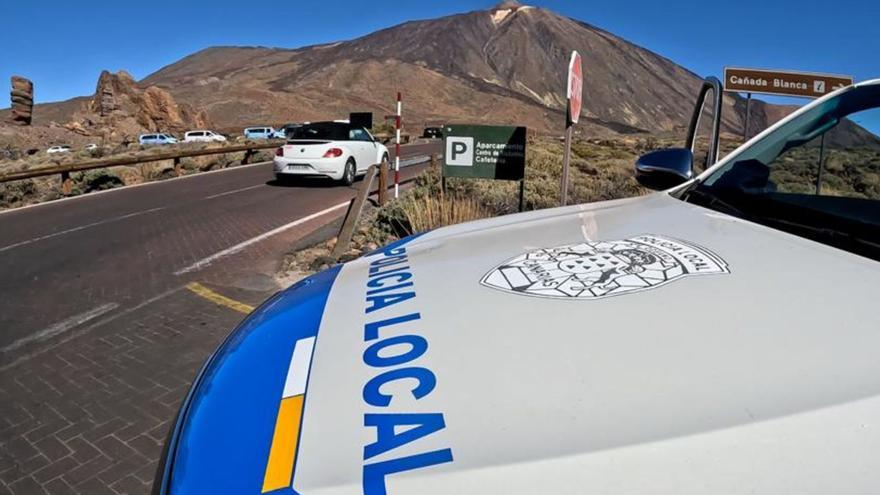
Hikers who stray from designated trails to engage in prohibited activities, visitors who camp in protected areas of significant natural value, graffiti and other vandalistic acts in historically important sites, traffic congestions caused by overcrowding… TheTenerife Island Council has launched an operation to address the sense of lack of control in the main protected areas of the island, especially in four key locations: the National Park of Teide, Teno, Anaga, and El Médano. This comes after a surge in environmental attacks that have exposed the insufficient surveillance measures.
The operation was launched earlier this month. The island government and its environmental agents are working in coordination with the Canary Islands Police, the nature protection service of the Civil Guard (Seprona), and several local police forces, mainly La Orotava’s. This past weekend saw the first operation take place in Teide, the island’s most ecologically significant area and the most concerning due to visitor overcrowding: more than four million annually, making it the most visited national park in Europe. The outcomes included four traffic citations for parking in restricted zones and warnings issued to tourists and locals for parking in the middle of the road or taking photos on the roadside obstructing traffic.
Pedro Millán, Director of Natural Environment, states that this deployment “is just the beginning.” He explains that a meeting has been requested with the Central Government Delegation in the province of Santa Cruz de Tenerife to involve the traffic units of the Civil Guard. “The Council’s personnel have limited powers. For instance, they cannot issue traffic fines. That’s why we are engaging all relevant authorities to achieve the broadest scope possible within the means available to us,” Millán clarifies.
The Director and experienced mountaineer recalls the recent €250,000 agreement signed with the Local Police of La Orotava to control traffic in Teide National Park and provide tow trucks for removing violating vehicles. “In general, locals, nationals, and foreign tourists exhibit good behavior in our protected areas. Even many visitors from other countries set an example by using public transport and adhering to all rules. The issue lies with the minority disregarding the regulations, causing numerous problems,” he clarifies.
The operation has already started in Teide, Teno, and Anaga but will expand to other heavily pressured areas such as El Médano in the municipality of Granadilla de Abona. Tenerife Island Council has observed massive caravans on specific dates parking in unauthorized areas. “It will extend to all locations where we identify overcrowding and activities endangering our rich biodiversity,” emphasizes the Director of Natural Environment of Tenerife Island Council.
[–>
The island Corporation reminds that this is a matter of “common sense” and “simply respecting the rules specified on the signage in each area.” It advises the use of public transport and, in addition to surveillance measures, is preparing awareness campaigns and brochures for all involved parties, including rental car companies and excursion organizers.
Subscribe to continue reading















